led display types: how to choose the right screen | dicolor-凯发app
how-to|tips
jan 18, 2024
amid the dominance of led technology, selecting the right display is crucial. this article provides practical insights into different led display types and technologies, offering guidance on making a choice tailored to your needs.
according to application scenarios and structural characteristics, display screens can be divided into indoor screens, outdoor screens, transparent screens, flexible screens, high-resolution screens, mobile screens, and rental screens. below i will take you to understand their characteristics and application scenarios.

1. indoor led display screen features: small dot spacing, high grayscale, high refresh rate, and wide color gamut;
application scenarios: indoor ultra-clear display in shopping malls, retail stores, car shows, training rooms, monitoring rooms, command centers, etc.
2. outdoor led display screen features: high brightness, high protection, long line of sight, energy-saving;
application scenarios: outdoor places such as stations, airports, bus stop information signs, outdoor billboards, sports venues, etc.
3. transparent led display screen features: high transparency, lightweight, easy maintenance, energy-saving, and support for ceiling;
application scenarios: stage performances, car shows, television stations, and holiday events.
4. features of flexible led display screen: flexible curved surface, creative splicing, lightweight;
application scenarios: creative display scenes such as commercial districts, shopping centers, car shows, concerts, celebrations, etc.
5. high resolution led display screen features: high contrast, wide color gamut, high grayscale, and high refresh rate;
application scenarios: conference rooms, command centers, cinemas, sports arenas, monitoring centers, car shows, and press conferences.
6. features of mobile led display screen: movable (easy to move and carry), flexible (adjustable position)
application scenarios: mobile advertising vehicles, poster machines, wedding celebrations, mobile exhibitions.
7. rental led display screen features: multiple sizes, lightweight, fast installation, corner protection design, convenient maintenance
application scenarios: product launches, promotional activities, wedding celebrations, car shows.

1. led monochrome display technology: refers to the use of single-color led to build a display screen. for example, red, green or blue, different information can be displayed by controlling the brightness and switching of these led. advantages: low cost, low power consumption and high brightness. application scenarios: traffic lights, digital clocks, price display boards, etc.
2. three-color display technology: refers to the technology that uses three basic colors of led (red, green, and blue) to build a display screen. these three colors of led combine in different brightness to produce rich colors and images. this technology, also known as rgb display technology, can present various colors by adjusting the brightness of three-color led.

3. micro led displays technology is an advanced display technology that uses micro-sized micro led as display units. compared with traditional led, it is smaller, brighter and more energy efficient. micro led displays are widely used in televisions, display screens, vr equipment and other fields.

4. oled (organic led) displays technology: refers to the use of organic light-emitting diodes as luminescent materials. oled screens are composed of many tiny organic materials. these organic materials are excited by electric current to produce self-luminescence. they are widely used in mobile phones, tvs, electronic products and other fields.
5. flexible led displays technology is an innovative display technology that uses led screens made of flexible substrates and materials, allowing the display to be curved and flexible. this technology allows led displays to adapt to different curved surfaces, allowing for more flexible design and installation.
6. transparent led displays technology is an innovative display technology that uses transparent led screens to maintain transparency while displaying information. this technology is widely used in retail stores, exhibition halls, car showrooms and other places to provide unique interaction and display methods.
7. mini-led and quantum dot led displays technology: mini-led uses tiny led backlights to achieve higher brightness and contrast, providing more detailed image performance. quantum dot technology uses nanoparticles to achieve a wider color gamut and more realistic color reproduction.

8. creative led display technology: refers to the use of flexible led module combinations to create various shapes, curves and three-dimensional effects, providing users with a more creative and personalized display experience.
application scenarios: first of all, we need to clarify the usage scenario of the led display. is it indoors or outdoors? is it a billboard, a stage show or an information display? different scenarios have different needs, such as waterproofing, sun protection, etc.
resolution and size: according to the installation space and audience distance, select the appropriate resolution and screen size to ensure image clarity and visual effects.
brightness and contrast: choose the right product based on the brightness of the environment, such as outdoor or high-brightness environments. choose a screen with high brightness and contrast to ensure clear visibility under various lighting conditions.
viewing angles: choose a screen with a wide viewing angle to ensure the image remains consistent when viewed from different angles.
color performance: if color performance is very important to the application, choose a full-color led display with good color reproduction performance.
refresh rate: for applications that need to play high-speed dynamic content, choose a display with a higher refresh rate to avoid screen tearing and blurring.
durability: evaluate the durability and reliability of led displays and choose products with reliable quality to reduce maintenance costs.
energy efficiency: consider the energy efficiency of led displays and choose products with lower energy consumption to help reduce operating costs.
budget: ultimately, weigh the above factors based on the project budget and choose the most suitable led display.
the 凯发app-凯发体育app has the characteristics of high brightness, energy saving, high refresh, high grayscale, and high color gamut. when choosing an led display, you need to consider factors such as application scenario, size, and brightness. with the continuous improvement of scene requirements, future led displays should focus on innovations such as higher resolution, higher refresh rate, wider color gamut, intelligence, augmented reality (ar) and virtual reality (vr). only by continuing to meet the needs of diverse can we lead the development of digital display technology.
types of led display screens?
according to application scenarios and structural characteristics, display screens can be divided into indoor screens, outdoor screens, transparent screens, flexible screens, high-resolution screens, mobile screens, and rental screens. below i will take you to understand their characteristics and application scenarios.

1. indoor led display screen features: small dot spacing, high grayscale, high refresh rate, and wide color gamut;
application scenarios: indoor ultra-clear display in shopping malls, retail stores, car shows, training rooms, monitoring rooms, command centers, etc.
2. outdoor led display screen features: high brightness, high protection, long line of sight, energy-saving;
application scenarios: outdoor places such as stations, airports, bus stop information signs, outdoor billboards, sports venues, etc.
3. transparent led display screen features: high transparency, lightweight, easy maintenance, energy-saving, and support for ceiling;
application scenarios: stage performances, car shows, television stations, and holiday events.
4. features of flexible led display screen: flexible curved surface, creative splicing, lightweight;
application scenarios: creative display scenes such as commercial districts, shopping centers, car shows, concerts, celebrations, etc.
5. high resolution led display screen features: high contrast, wide color gamut, high grayscale, and high refresh rate;
application scenarios: conference rooms, command centers, cinemas, sports arenas, monitoring centers, car shows, and press conferences.
6. features of mobile led display screen: movable (easy to move and carry), flexible (adjustable position)
application scenarios: mobile advertising vehicles, poster machines, wedding celebrations, mobile exhibitions.
7. rental led display screen features: multiple sizes, lightweight, fast installation, corner protection design, convenient maintenance
application scenarios: product launches, promotional activities, wedding celebrations, car shows.

types of led display technologies
1. led monochrome display technology: refers to the use of single-color led to build a display screen. for example, red, green or blue, different information can be displayed by controlling the brightness and switching of these led. advantages: low cost, low power consumption and high brightness. application scenarios: traffic lights, digital clocks, price display boards, etc.
2. three-color display technology: refers to the technology that uses three basic colors of led (red, green, and blue) to build a display screen. these three colors of led combine in different brightness to produce rich colors and images. this technology, also known as rgb display technology, can present various colors by adjusting the brightness of three-color led.

3. micro led displays technology is an advanced display technology that uses micro-sized micro led as display units. compared with traditional led, it is smaller, brighter and more energy efficient. micro led displays are widely used in televisions, display screens, vr equipment and other fields.

4. oled (organic led) displays technology: refers to the use of organic light-emitting diodes as luminescent materials. oled screens are composed of many tiny organic materials. these organic materials are excited by electric current to produce self-luminescence. they are widely used in mobile phones, tvs, electronic products and other fields.
5. flexible led displays technology is an innovative display technology that uses led screens made of flexible substrates and materials, allowing the display to be curved and flexible. this technology allows led displays to adapt to different curved surfaces, allowing for more flexible design and installation.
6. transparent led displays technology is an innovative display technology that uses transparent led screens to maintain transparency while displaying information. this technology is widely used in retail stores, exhibition halls, car showrooms and other places to provide unique interaction and display methods.
7. mini-led and quantum dot led displays technology: mini-led uses tiny led backlights to achieve higher brightness and contrast, providing more detailed image performance. quantum dot technology uses nanoparticles to achieve a wider color gamut and more realistic color reproduction.

8. creative led display technology: refers to the use of flexible led module combinations to create various shapes, curves and three-dimensional effects, providing users with a more creative and personalized display experience.
how to choose the right led screens
application scenarios: first of all, we need to clarify the usage scenario of the led display. is it indoors or outdoors? is it a billboard, a stage show or an information display? different scenarios have different needs, such as waterproofing, sun protection, etc.
resolution and size: according to the installation space and audience distance, select the appropriate resolution and screen size to ensure image clarity and visual effects.
brightness and contrast: choose the right product based on the brightness of the environment, such as outdoor or high-brightness environments. choose a screen with high brightness and contrast to ensure clear visibility under various lighting conditions.
viewing angles: choose a screen with a wide viewing angle to ensure the image remains consistent when viewed from different angles.
color performance: if color performance is very important to the application, choose a full-color led display with good color reproduction performance.
refresh rate: for applications that need to play high-speed dynamic content, choose a display with a higher refresh rate to avoid screen tearing and blurring.
durability: evaluate the durability and reliability of led displays and choose products with reliable quality to reduce maintenance costs.
energy efficiency: consider the energy efficiency of led displays and choose products with lower energy consumption to help reduce operating costs.
budget: ultimately, weigh the above factors based on the project budget and choose the most suitable led display.
conclusion
the 凯发app-凯发体育app has the characteristics of high brightness, energy saving, high refresh, high grayscale, and high color gamut. when choosing an led display, you need to consider factors such as application scenario, size, and brightness. with the continuous improvement of scene requirements, future led displays should focus on innovations such as higher resolution, higher refresh rate, wider color gamut, intelligence, augmented reality (ar) and virtual reality (vr). only by continuing to meet the needs of diverse can we lead the development of digital display technology.